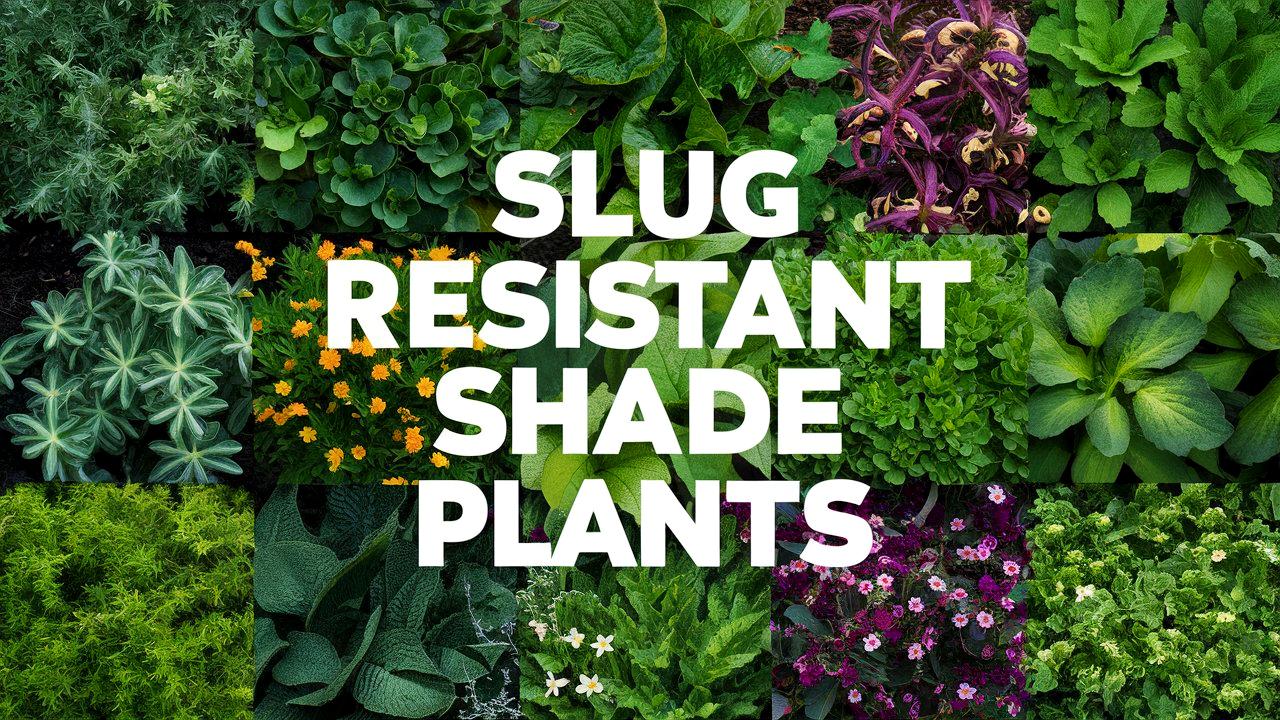When designing a garden, one of the most troublesome challenges gardeners often encounter is the ever-persistent slug. These slimy pests are notorious for feasting on tender foliage and can destroy plants in a matter of days, especially in shady areas where moisture levels are high.
Fortunately, there are several plants known for their resistance to slugs, allowing you to cultivate a lush and healthy garden without fear of annihilation. This guide compiles a list of slug-resistant shade plants, offering insights into their characteristics, benefits, and care requirements.
Wild garlic (Allium ursinum)
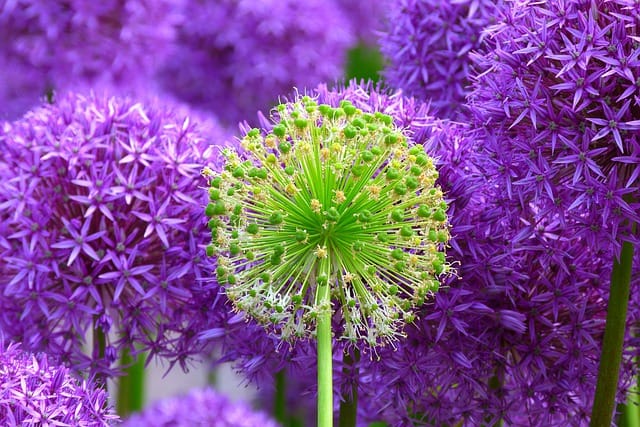
Wild garlic, known scientifically as Allium ursinum, is a delightful addition to any shade garden. This perennial plant thrives in woodland areas, which makes it perfect for shady spots. Its broad, green leaves produce a striking visual while also providing a fragrant aroma similar to that of traditional garlic. Wild garlic is not only slug resistant but also considered beneficial in deterring pests in general, making it an excellent choice for companion planting.
One of the most appealing features of wild garlic is its edible nature. The leaves can be used to flavor dishes, while the white, star-shaped flowers bloom in spring, adding beauty to the garden. Given that slugs tend to avoid plants with strong scents, the pungent aroma of Allium ursinum acts as a natural repellant. Wild garlic prefers moist, well-drained woodland soil enriched with organic matter, ensuring it flourishes year after year.
To cultivate wild garlic, consider planting it in clusters beneath taller trees or alongside other perennial companions that thrive in similar conditions. With a little care, you can create a fragrant and stunning patch that will continuously provide an aesthetic and culinary treat for your garden.
Japanese spurge (Pachysandra terminalis)
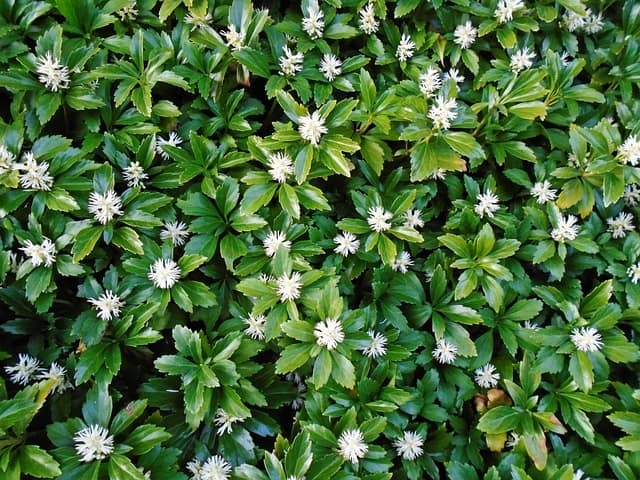
Japanese spurge, or Pachysandra terminalis, is a robust ground cover plant native to East Asia. This evergreen perennial is particularly well-suited for shaded areas, flourishing where many other plants struggle to survive. Its glossy, dark green leaves create a lush carpet that thrives in acidic, humus-rich soil.
Aside from being slug-resistant, Japanese spurge boasts other advantageous attributes. Once established, it requires minimal maintenance, making it an excellent choice for busy gardeners. The plant spreads easily through rhizomes, filling in bare spots and preventing weeds from taking hold. It produces small, white flower spikes in spring, which attract pollinators, adding further biodiversity to your garden. These flowers keep slug populations at bay due to their unpalatable taste, encouraging a healthy ecosystem in your shaded areas.
For best results, plant Japanese spurge in partial to full shade where it is protected from harsh afternoon sunlight. It can also tolerate dry soil once established, making it a versatile choice for less hospitable areas of the garden.
Hostas
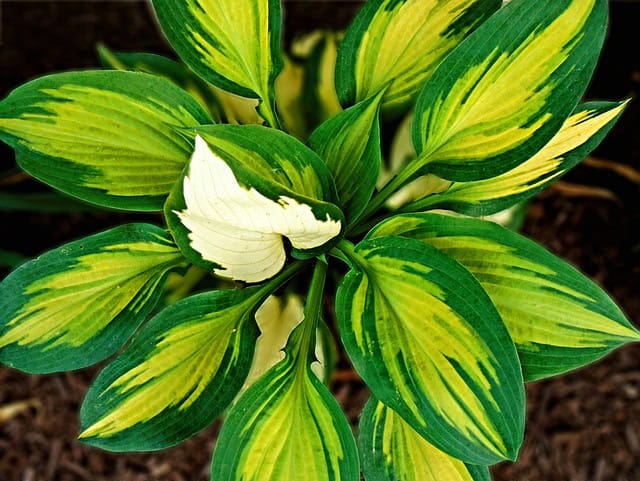
Hostas are perhaps one of the most beloved shade plants, prized for their stunning foliage and variety of shapes, sizes, and colors. These perennial plants are particularly resilient against slugs and other pests due to their thick, leathery leaves, which offer a less appealing texture for these voracious feeders.
There are countless varieties of hostas, ranging from small, delicate types to large, ornate ones. The lush foliage can be variegated with striking gold, white, or blue hues, contributing a dramatic flair to shaded areas. Hostas not only thrive in partial to full shade but also genuinely appreciate the organic-rich soils and consistent moisture conditions that these environments typically provide.
One of the best practices for growing hostas is to plant them in clusters for maximum visual impact, allowing their large leaves to create an impressive backdrop for smaller companions. To further protect them from slugs, consider adding a layer of mulch around the plants. This discourages slugs from crossing the dry surface and provides additional moisture retention for these moisture-loving plants.
Three-lobed liverwort (Hepatica nobilis var. nobilis)
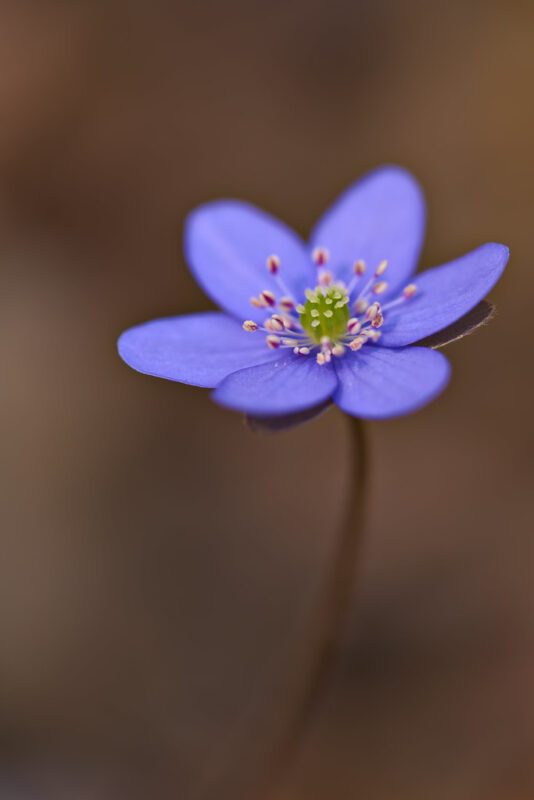
The three-lobed liverwort (Hepatica nobilis var. nobilis) is a delightful perennial that brings early spring blooms to woodland gardens. With delicate, star-shaped flowers that bloom in shades of purple, pink, or white, this plant adds an enchanting touch to shaded areas while proving to be a slug-resistant choice.
This plant favors alkaline to neutral soils rich in leaf mold, making it a great candidate for planting under deciduous trees in woodlands or shaded borders. The liverwort typically forms clumps, spreading slightly over time, making it ideal for filling in gaps in a shade garden. Its presence helps maintain soil integrity and moisture levels, benefiting the surrounding plants as well.
Interestingly, the three-lobed liverwort is also a favorite among pollinators due to its early bloom time, providing nectar and pollen when other food sources are scarce. This floral appeal, combined with its hardiness and resilient nature against slugs and other pests, makes it an excellent choice for any shaded garden.
Prachtspiere (Astilbe x arendsii)
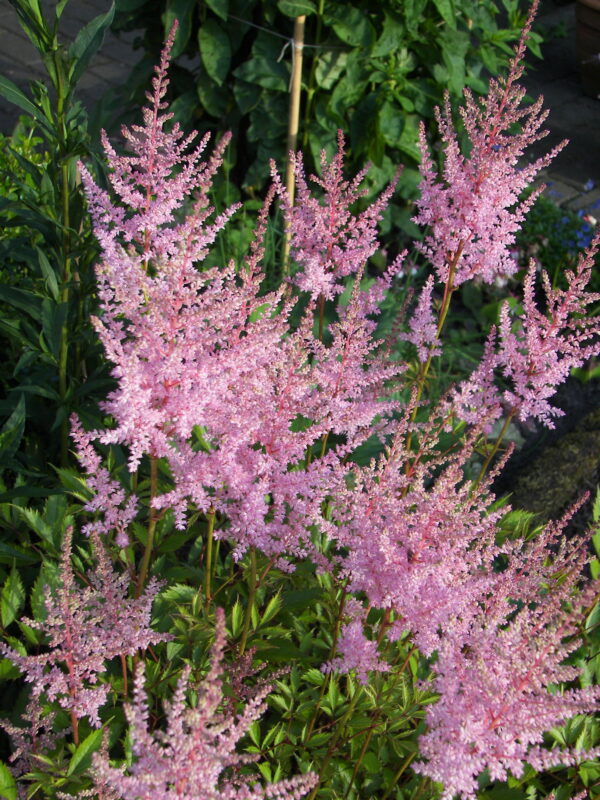
Astilbe x arendsii, commonly known as Prachtspiere or false spiraea, is another stunning slug-resistant plant that truly thrives in the shade. With cascading plumes of feathery flowers that bloom in mid to late summer, these plants can add height and texture to your garden, drawing the eyes upward and providing ample contrast to lower-growing specimens.
Astilbe prefers consistently moist soil and partial to full shade, making them perfect for low-light areas like the edges of woods, near ponds, or shaded garden beds. Its finely divided leaves create a lush backdrop, which can complement other shade-loving perennials beautifully.
As a slug-resistant plant, Astilbe benefits from its somewhat fibrous and hairy leaves, which slugs find unappealing. When planted in masses, the display of their colorful flower spikes can be absolutely breathtaking, showcasing colors that range from white and cream to pinks and reds.
To ensure the best performance of Prachtspiere, it’s essential to keep the soil adequately moist during dry spells, paying close attention to young plants which may require more attention as they establish. Astilbe’s enchanting flowers provide beauty and a welcome nectar source for various butterflies and bees in the summer months.
Heuchera
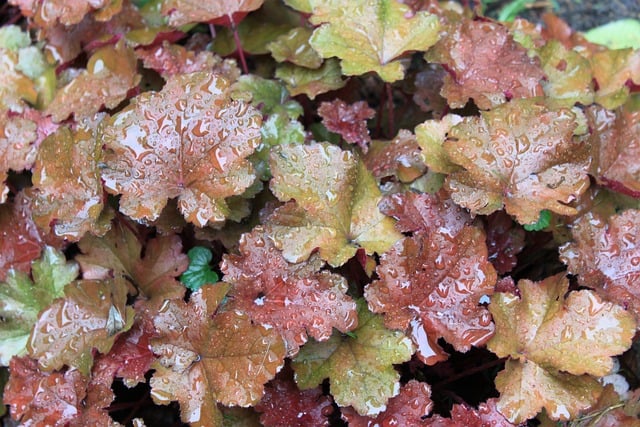
Heuchera, commonly referred to as coral bells, features a wide variety of species that are well-suited for shady gardens and known for their slug-resistant capabilities. These perennial plants have velvety leaves that come in a range of colors, including green, purple, bronze, and even silver, providing diversity and visual interest in shaded areas.
The plant is primarily cultivated for its foliage, while producing delicate, bell-shaped flowers on long stalks during late spring and summer. While the blossoms attract pollinators, their root system is particularly effective at deterring slugs, thanks to the plant’s high tannin content. Tannins generally make plants unpalatable to slugs and various insect pests.
Heuchera thrives best in well-drained soils enriched with organic matter but can tolerate a variety of soil types once established. Consider pairing them with brightly colored shade-loving flowers to create a striking contrast in your garden, or use them as a ground cover to enhance the visual appeal of shaded pathways.
Forest honeysuckle (Aruncus sylvestris)
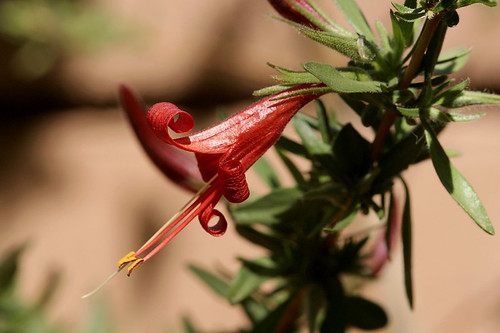
Forest honeysuckle, or Aruncus sylvestris, is a unique perennial that excels in dappled woodland shade. This hardy plant features feathery, fern-like foliage and produces tall plumes of creamy white flowers in late spring to early summer, creating a stunning centerpiece in shaded areas.
The foliage of forest honeysuckle is not only aesthetically pleasing but also tough and unappetizing to slugs, largely contributing to its resistance against these pests. This workhorse plant thrives in rich, moist soils but can tolerate a range, making it adaptable to varying conditions.
One of the key benefits of incorporating Aruncus sylvestris into your landscape is its impeccable ability to attract pollinators while remaining resistant to slug damage. It’s ideal for planting alongside ferns or other shade-tolerant perennials, creating a layered garden structure.
For best results, ensure forest honeysuckle is not exposed to excessive direct sunlight, as it prefers partial to full shade. Regular moisture through watering or rainfall is vital for its thriving growth, especially during warmer months.
Woodruff (Galium odoratum)

Woodruff, or Galium odoratum, is a delicate perennial that flourishes in shady gardens. Renowned for its charming whorled leaves and fragrant white flowers that bloom during spring, woodruff exudes a sweet scent reminiscent of freshly cut hay when crushed, making it a delightful addition to any shaded space.
This low-growing herbaceous plant fills in gaps effectively with its vigorous growth, meaning it’s an excellent ground cover option under trees or shrubs. More importantly, slugs tend to avoid woodruff, finding its scent unpalatable.
Woodruff prefers rich, well-drained soils and does particularly well in dappled sunlight, making it a natural fit for forest gardens and shaded corners. Once established, it requires little maintenance while providing a lush green carpet. Furthermore, it attracts beneficial insects, such as bees and butterflies, which enhances the biodiversity of your garden.
While it can handle dry spells, consistent moisture is essential for optimal growth, particularly in the early stages after planting. This shade-loving perennial not only combats slug populations but also offers aesthetic and aromatic benefits.
Barren strawberry (Waldsteinia ternata)
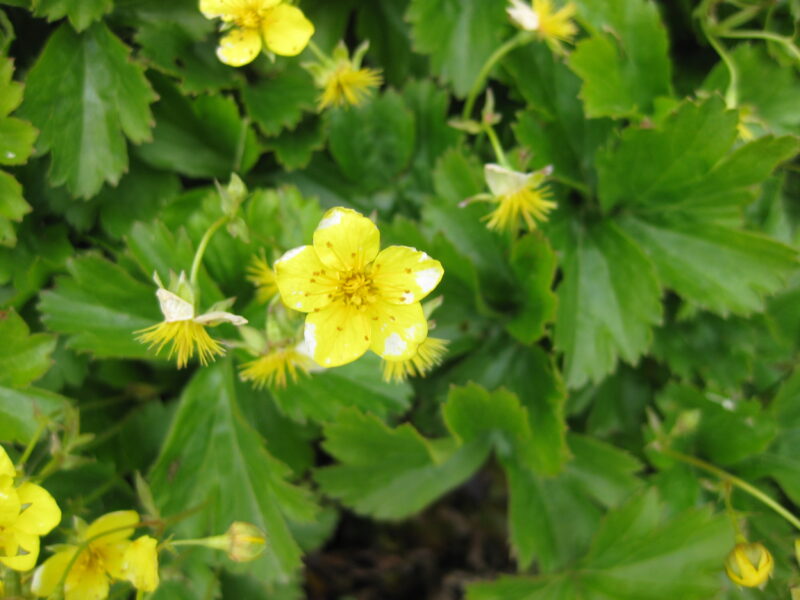
Barren strawberry, scientifically known as Waldsteinia ternata, is a versatile ground cover that thrives in partial shade and is remarkably resilient to slugs. This perennial forms a dense mat of glossy, evergreen leaves that provide a vibrant green cover throughout the year.
In the spring, barren strawberry produces bright yellow flowers that resemble those of wild strawberries, offering a cheerful burst of color in the shade. Despite its name, this plant isn’t just a pretty face; it’s also highly regarded for its ability to adapt to varying soil conditions and levels of moisture.
The dense foliage of Waldsteinia ternata acts as a natural barrier to slugs, discouraging them from feeding while simultaneously smothering competing weeds. This makes it an ideal option for gardeners looking for a beautiful yet functional ground cover in shaded areas.
For best growth, plant barren strawberry in well-drained soil, and consider providing minimal trimming in late winter to encourage fresh growth in the spring. Combine it with other shade-loving plants or wildflowers to create a dynamic and resilient garden that remains slug-free.


